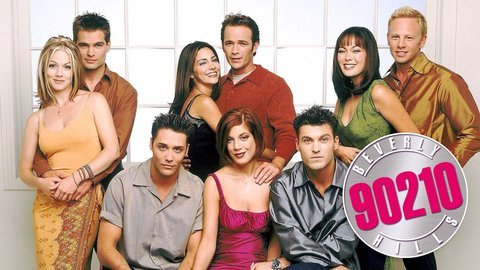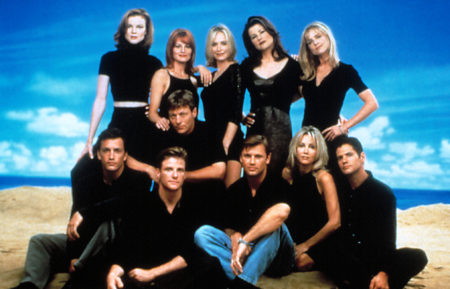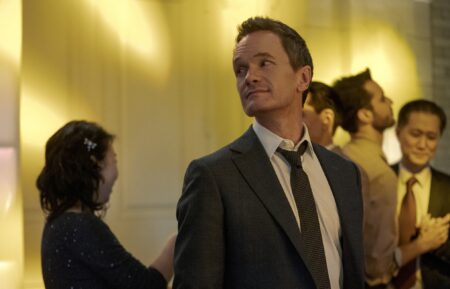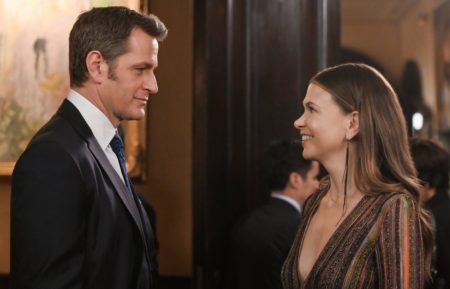Darren Star
Credits

UncoupledStream
Creator
Series
2022

UncoupledStream
Executive Producer
Series
2022

And Just Like That...Stream
Creator
Miniseries
2021

Emily in ParisStream
Creator
Series
2020

Talks at GS
Guest
Show
2017

Close Up With The Hollywood Reporter
Guest
Show
2015

YoungerStream
Director
Series
2015

YoungerStream
Executive Producer
Series
2015

GCBStream
Executive Producer
Series
2012

Breakfast in Bed Marathon
Executive Producer
Show
2010

Sex and the City 2
Producer
Movie
2010

Chillin' With Dylan
Executive Producer
Show
2009

Melrose Place
Creator
Show
2009

90210's 50 Hottest Marathon
Executive Producer
Show
2008

Cashmere Mafia
Executive Producer
Show
2008

Sex and the CityStream
Producer
Movie
2008

Runaway
Executive Producer
Show
2006

Back to School With 90210
Executive Producer
Show
2006

Kitchen Confidential
Executive Producer
Show
2005

Serial Bowl
Executive Producer
Show
2005

Miss Match
Executive Producer
Series
2003

The $treet
Executive Producer
Series
2000

Grosse Pointe
Executive Producer
Show
2000

Grosse Pointe
Writer
Show
2000

Sex and the CityStream
Creator
Series
1998

Sex and the CityStream
Director
Series
1998

Sex and the CityStream
Executive Producer
Series
1998

Sex and the CityStream
Writer
Series
1998

CPW
Executive Producer
Show
1996

CPW
Writer
Show
1996

Central Park West
Executive Producer
Series
1995

Melrose PlaceStream
Creator
Series
1992

Melrose PlaceStream
Executive Producer
Series
1992

Melrose PlaceStream
Writer
Series
1992

Bill & Ted's Excellent Adventures
Writer
Show
1992

If Looks Could Kill
Screenwriter
Movie
1991

Beverly Hills 90210Stream
Creator
Series
1990

Beverly Hills 90210Stream
Director
Series
1990

Beverly Hills 90210Stream
Executive Producer
Series
1990

Beverly Hills 90210Stream
Writer
Series
1990

The BFFs of BH
Executive Producer
Show
1990

Entertainment Tonight
Guest
News
1981

Good Morning America
Guest
News
1975
News aboutDarren Star

‘Emily in Paris’ Season 5: Lucas Bravo’s Status & More Updates

‘Emily in Paris’ Teaser Hints at Big Life Decisions as Netflix Sets Season 3 Return (VIDEO)

Preview
‘Uncoupled’ Creators on Why a Breakup Is a Good Jumping-Off Point for a Rom-Com

10 Fun Facts About ‘Melrose Place,’ Now 30 Years Old

‘Uncoupled’ First Look: Neil Patrick Harris Explores Late-Life Dating (PHOTO)

‘Uncoupled’: Neil Patrick Harris Copes With a Breakup in First Look at Netflix Comedy (VIDEO)

Find Out When ‘Emily in Paris’ Returns for Season 2 & More Romantic Entanglements (PHOTOS)

Oh La La! Netflix’s ‘Emily in Paris’ Begins Production on Season 2

‘Younger’ Sets Final Season Premiere on Paramount+ — Find Out How Episodes Will Be Released (VIDEO)

Sutton Foster & Darren Starr Tout ‘Younger’ Ending With Season 7 — on Paramount+ (VIDEO)

Mon Dieu! ‘Emily in Paris’ Renewed for Season 2 at Netflix

Spoiler Alert
‘Emily in Paris’ Boss Breaks Down Emily’s Relationships With Gabriel & Camille

Q&A
Why ‘Emily in Paris’ Is Required Viewing for ‘Sex and the City’ & ‘Younger’ Fans

Preview
‘Younger’ Creator Promises a ‘Really Satisfying’ Season 7

‘Emily in Paris’ Sets Netflix Premiere Date, See Lily Collins in First Trailer (VIDEO)

Darren Star’s ‘Emily in Paris’ Starring Lily Collins Moves to Netflix

What to Know About ABC’s ‘GCB’ and Its Reboot on The CW





![Darren Star attends the New York Premiere of Netflix's 'Uncoupled' on July 26, 2022 at The Paris Theater in New York, New York, USA., Credit:Robin Platzer / Avalon (Newscom TagID: ptsphotoshotfour564065.jpg) [Photo via Newscom]](https://media.baselineresearch.com/images/2003524/2003524_small.jpg)
![Darren Star at arrivals for UNCOUPLED Premiere on Netflix, The Paris Theater, New York, NY July 26, 2022. Photo By: Kristin Callahan/Everett Collection (Newscom TagID: evphotostwo372154.jpg) [Photo via Newscom]](https://media.baselineresearch.com/images/2003513/2003513_small.jpg)





